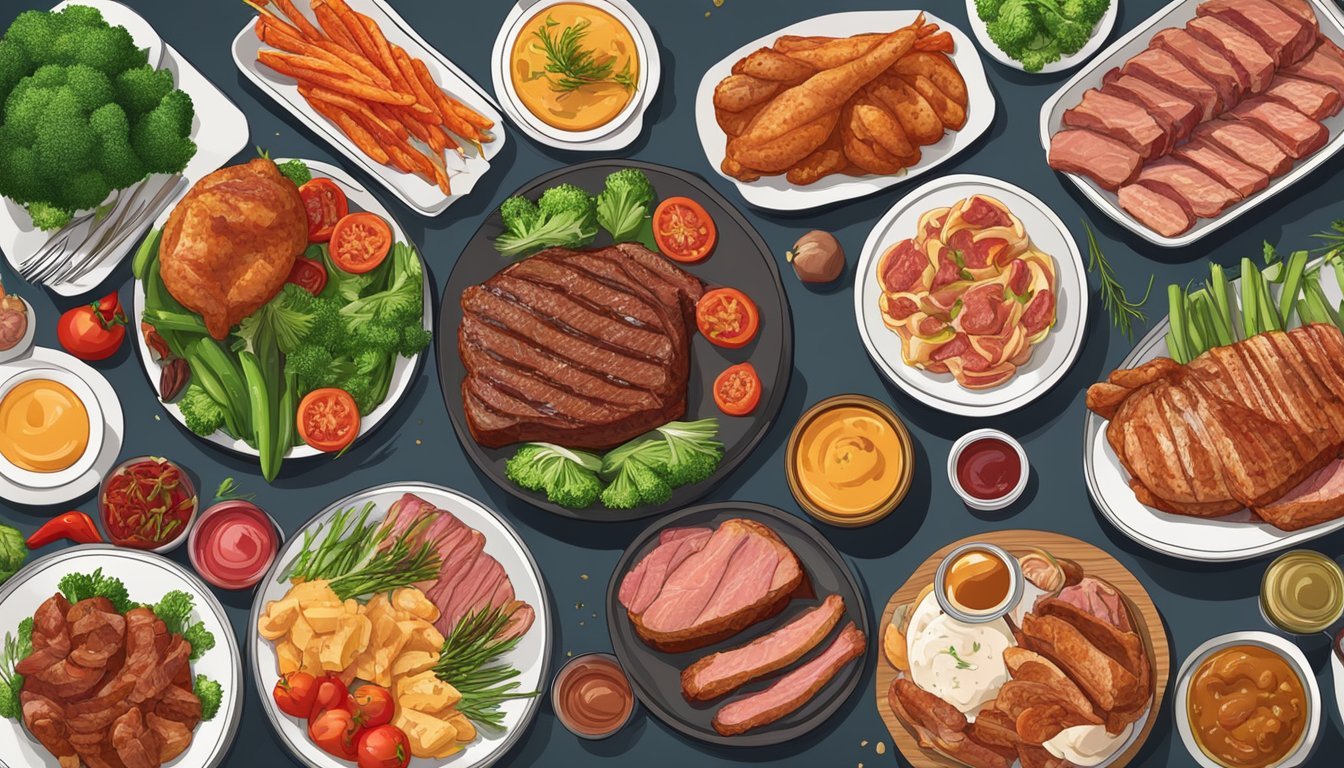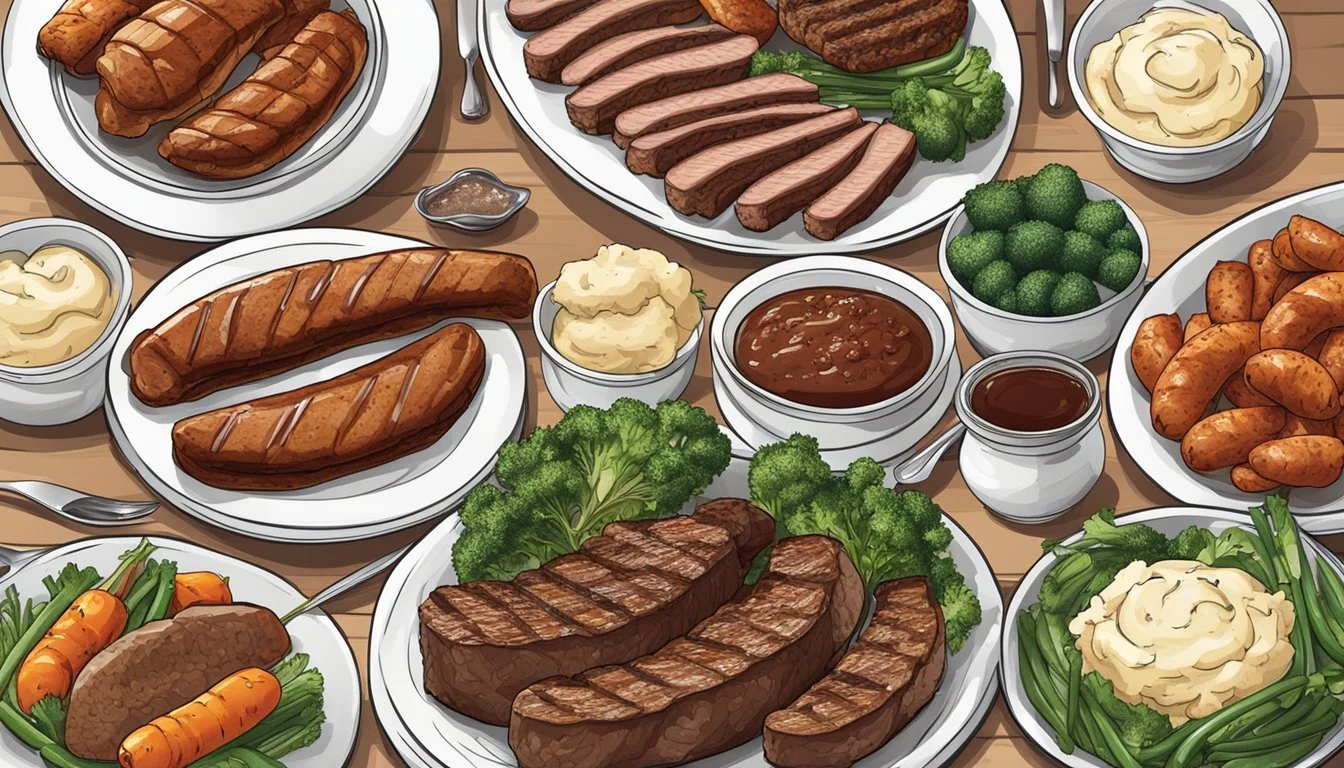How to Eat Out While Sticking to a Carnivore Diet
Expert Tips for Dining Success
Adhering to a carnivore diet while dining out presents unique challenges, given the diet's strict reliance on animal products and the exclusion of plant-based foods. This dietary approach emphasizes the consumption of meat, fish, eggs, and certain dairy products, eliminating all other food groups to focus on a high-protein and high-fat intake. Those on a carnivore diet prioritize health and often plan their meals carefully, which can make eating at restaurants seem daunting due to the prevalence of mixed-diet menus and the sociocultural prominence of plant-based options.
Despite these potential obstacles, individuals committed to this lifestyle can still enjoy dining out with strategic decision-making and clear communication with restaurant staff. Success in maintaining dietary adherence in a restaurant setting requires knowing which foods fit within the diet's parameters, asking the right questions about menu items, and being prepared to make specific requests. Opting for simple, unseasoned meat dishes and avoiding sauces or sides that may contain hidden sugars or plant derivatives is a straightforward method to stay within the confines of the carnivore diet.
It is crucial for those on the carnivore diet to survey the restaurant's offerings in advance when possible and to not shy away from making their dietary needs known. Being proactive about meal planning allows individuals to maintain their health goals without compromising the social and experiential benefits of dining out. With a growing awareness of various dietary preferences, many restaurants are increasingly accommodating, making it easier for individuals who follow specialized diets to find suitable options.
Understanding the Carnivore Diet
The carnivore diet is centered around consuming animal products exclusively, prioritizing meat as a primary source of nutrition while eliminating plant-based foods. It aims to provide the body with protein, fats, and essential nutrients predominantly through meat, dairy, and other animal products.
Foundations of Carnivore Eating
The carnivore diet is grounded in the consumption of animal products. This includes a range of meats like beef, pork, chicken, and fish, as well as organ meats such as liver, which are highly nutrient-dense. Dairy products like cheese and eggs are also common in some variations of the diet.
Benefits and Considerations
Adhering to a carnivore diet may lead to weight loss, improved energy levels, and reduced inflammation. However, individuals should be aware of the health implications, including the diet's high saturated fat and cholesterol content, and understand the importance of eating high-quality, grass-fed meats where possible.
Carnivore Diet vs. Other Diets
Unlike plant-based diets that incorporate vegetables, fruits, grains, and fiber, the carnivore diet eliminates these, focusing solely on animal-sourced protein and fat. It differs significantly from diets that balance plant and animal foods or those high in carbohydrates.
Essential Nutrients and Vitamins
The diet provides essential nutrients and vitamins, such as B12 and iron, primarily through meat. However, some question the absence of vitamin C and fiber. When planning this diet, be sure to consider how to obtain a full spectrum of vitamins and minerals.
Discover the endless possibilities of buying vitamin C and fiber supplement online!
Dealing with Dietary Restrictions
If you have food allergies or intolerances, it's essential to tailor the carnivore diet accordingly. Consult with a healthcare provider to ensure that nutritional needs are met without adverse effects from common allergens found in certain animal products.
Fats and Proteins: Quality and Sources
Prioritize high-quality sources of meat to ensure an adequate intake of omega-3 and fat-soluble vitamins. Grass-fed and organic meats are often recommended for their nutrient density and lower levels of contaminants and hormones.
Integrating Intermittent Fasting
Some carnivore dieters incorporate intermittent fasting to potentially enhance fat loss and regulate blood sugar levels. Fasting periods can range from 16-hour fasts to longer periods, depending on personal health goals and preferences.
How to Maintain the Diet
Consistency is key to maintaining the carnivore diet. Regular meal planning and understanding the need for occasional modifications can help sustain the diet long-term. Establishing a consistent meal plan can also aid in maintaining energy levels and mitigating cravings.
Meal Timing: Breakfast, Lunch, Dinner
Carnivore diet followers typically consume two to three meals daily, each centered around protein and fat sources. Breakfast can include eggs and bacon, lunch and dinner emphasize meat or fish, with the option to include high-fat dairy products.
Defining Success on the Carnivore Diet
Success on the carnivore diet is individualized, ranging from weight loss to improved health markers. It's crucial to set personal goals and work towards them, whether that involves fat loss, muscle growth, or better energy levels.
Carnivore Diet Myths and Misconceptions
Common misconceptions include the idea that the diet causes heart disease or that it lacks essential nutrients. While concerns about saturated fat and cholesterol are valid, many on the diet report improved health metrics and satisfaction from the simplicity of meal planning.
Practical Meal Planning and Strategies
Eating out while adhering to a carnivore diet can be manageable with a meticulous approach to meal planning and preparation. Having strategies for meal creation, grocery shopping, and food storage is essential for maintaining a nutrient-dense diet centered on animal products.
Creating a Balanced Meal Plan
When they structure a meal plan, individuals should prioritize incorporating a variety of meats to ensure nutritional balance. A well-rounded plan might include:
Grass-fed beef for its high-quality fats
Organ meats like liver for their nutrient density
Fatty fish such as salmon (What wine goes well with salmon?) for omega-3 fatty acids
By ensuring a mix of different meats, diners can cover a broad spectrum of essential nutrients.
Grocery Shopping and Label Reading
Attention to labels during grocery shopping is crucial. Shoppers should look for:
Labels indicating grass-fed or pasture-raised to identify high-quality meats
Absence of unwanted additives in animal products
Nutrition facts that align with their dietary goals
Understanding labels helps consumers select the most nutrient-dense options while avoiding products that may conflict with the principles of the carnivore diet.
Cooking Techniques and Storage
Proper cooking techniques enhance the flavor and preserve the nutrition of meats. Some effective methods include:
Searing steaks to lock in juices
Roasting joints of meat for an even cook
Slow-cooking to tenderize tougher cuts
For preserving meat:
Securely wrap the meats in freezer-safe materials.
Store in the freezer for up to three months.
Maintain a temperature that prevents freezer burn and preserves quality.
When prepared and stored correctly, meat can retain its nutrient value and taste, ensuring enjoyable and healthful meals even when dining out is not an option.
When it comes to skillet and slow cooker, online shopping is the way to go!
Dining Out on a Carnivore Diet
Dining out on a carnivore diet involves selecting the right restaurants, understanding menus, and effectively communicating your dietary needs while maintaining social grace.
Understand Restaurant Menus
When examining restaurant menus, one should focus on pure animal-based dishes such as steaks, chops, or seafood platters. Avoid items described with terms like "glazed," "marinated," or "served with sauce," as these often contain non-carnivore ingredients. It's prudent to ask for the plain version of a dish, specifying no seasoning, breading, or sauce.
Choosing Carnivore-Friendly Restaurants
Selecting restaurants that naturally align with the carnivore diet can lead to a more enjoyable experience. Steakhouses and Brazilian churrascarias are excellent choices as they offer a variety of meat options. It's ideal to look for places that emphasize high-quality, grass-fed and organic animal products.
Navigating Social Settings with Confidence
One's success in sticking to a carnivore diet while dining out is partially determined by their confidence in social settings. Approach each dining scenario with a clear plan to communicate your food preferences. When inviting others or being invited, suggest restaurants where you know you'll have options. This ensures your needs are met without significant fuss.
Adapting Meals and Side Dishes
Requesting modifications to meals is necessary when adhering to the carnivore diet. Replace typical side dishes such as vegetables or grains with additional animal products, like eggs or a side of bacon. Don't hesitate to ask about the preparation of dishes and communicate specific requests to omit non-compliant ingredients.
With these strategies, adhering to a carnivore diet while dining out can be both successful and enjoyable.
Advanced Topics in Carnivore Diet
The Carnivore Diet, a regimen high in protein and fat, presents unique challenges and considerations for those committed to its strict dietary paradigm. This section delves into the sophisticated aspects of sustaining energy, ensuring long-term health, the need for supplements, navigating common questions, and exploring the diversity of animal-based foods.
Managing Energy and Performance
Optimizing energy and performance on a Carnivore Diet requires balancing fat and protein intake. Fat is a critical energy source, providing sustained fuel, while protein is essential for muscle repair and growth. Individuals may need to adjust ratios to maintain energy levels, particularly if engaging in high-intensity activities. Monitoring blood sugar levels can be important, especially for those with type 2 diabetes, as this diet can cause significant shifts in blood sugar control.
Long-Term Health and Monitoring
Long-term health on a Carnivore Diet hinges on regular monitoring with a healthcare provider to ensure that health markers remain in optimal ranges. Key health aspects to monitor include:
Blood lipid profiles
This can help mitigate health risks that may arise from exclusive animal product consumption, such as increased risk of certain diseases.
The Role of Supplements
While the Carnivore Diet provides most essential nutrients, there are concerns about the lack of certain vitamins and minerals typically found in plant-based foods. Individuals may consider supplements to fill potential gaps. For example:
Vitamin C: To support the immune system
Magnesium: To support muscle and nerve function
Omega-3 fatty acids (from fish oil supplements if not consuming fatty fish like salmon or mackerel): To support heart health and reduce inflammation
Trust me, the easiest way to buy magnesium and fish oil is through online retailers!
Addressing Common Concerns
Common concerns regarding the Carnivore Diet often include topics like:
Variety: Including a range of animal-based foods such as poultry, venison (What wine goes well with venison?), game meats, cod, eggs, and salmon can provide a wider spectrum of nutrients.
Digestive Health: Some individuals may experience digestive changes. It's important to monitor gut health and consult with a healthcare provider if issues arise.
Expanding Food Choices
While maintaining strict adherence to animal products, expanding one's food choices within the diet can enhance enjoyment and nutritional content. Including a variety of meats such as:
Poultry
Venison
Game Meats
Fatty fish (e.g., Cod, Salmon, Mackerel)
Eggs
These foods not only provide a wide range of tastes and textures but also offer diverse nutrients essential for health.
Conclusion
Eating out while maintaining a carnivore diet requires both consistency and confidence in one's dietary choices. Individuals committed to this lifestyle can exercise their preferences with ease by selecting restaurants that cater to a high-protein, high-fat menu and communicating clearly with the staff about their dietary restrictions.
Key points for dining success include:
Prioritize simple dishes: Opt for steaks, grilled fish, or other unprocessed animal products.
Avoid hidden non-carnivore ingredients: Stick to water and unsweetened beverages.
Those following the carnivore diet can not only sustain their nutritional goals but also experience personal growth by navigating social dining situations without compromising their dietary principles. This adaptability showcases an impressive command of the carnivore lifestyle.
Diners can be assured that, with thoughtful planning and assertive communication, they can enjoy a satisfying meal out without derailing their dietary progress.










